Chalcopyrite is the principal source of copper. It is also the most likely source material for many other notable copper-bearing minerals like turquoise, malachite, cuprite, azurite, etc. These minerals form in the supergene environment (close to the surface) where chalcopyrite is not stable in contact with groundwater. Chalcopyrite may also alter to iron-bearing minerals because it contains iron as much as copper. Its chemical formula is simple as is common among the sulfide mineral group: CuFeS2.
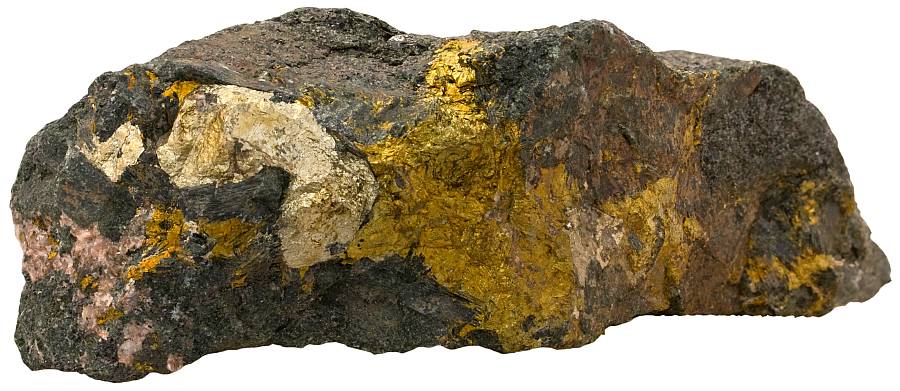
Pyrite is paler and greenish yellow on the left. Chalcopyrite next to it has much more intense yellow color. Reddish patch on the left is an igneous rock monzonite. Width of sample 8 cm. Hannukainen, Finland.
Chalcopyrite, as the name suggests, is somewhat similar to the most common sulfide mineral pyrite but the difference becomes obvious when we have a chance to see them next to each other:
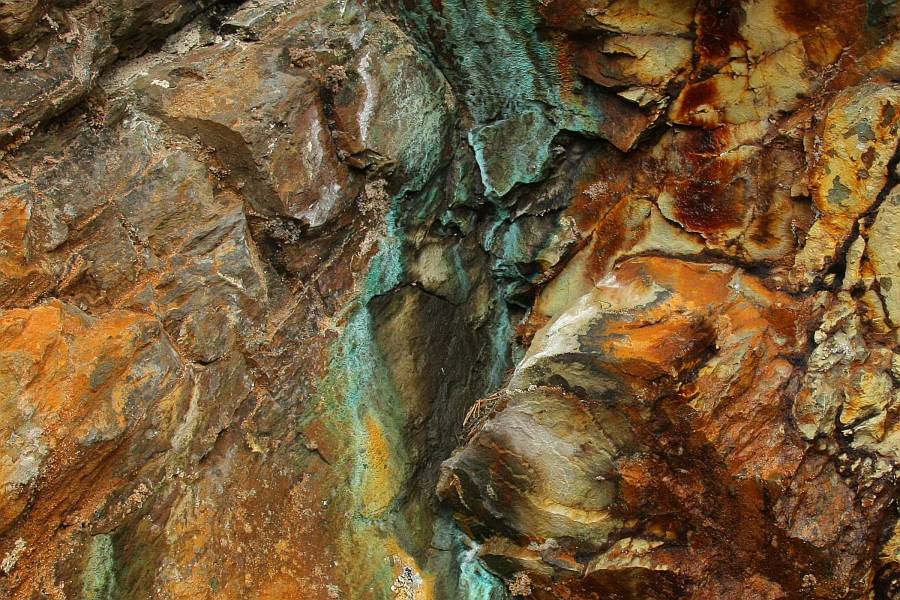
Greenish copper-bearing minerals on the wall of an abandoned copper mine in Norway. These minerals are alteration products of chalcopyrite. Dragset, Norway.
It is often said that pyrite is a fool’s gold but chalcopyrite is actually much better candidate to be mistaken for gold because of richer yellow tone. It is also significantly rarer mineral than pyrite which is chemically simply iron sulfide.
The source material of chalcopyrite comes from magma but it often crystallizes outside of the magma body with other ore minerals and of course quartz which forms the backbone of these mineral veins.
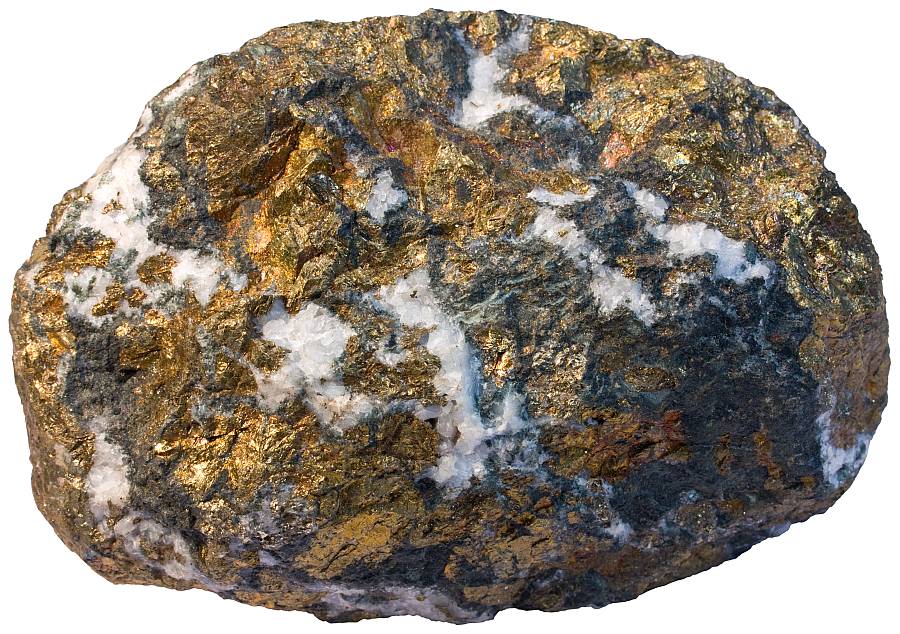
Chalcopyrite and quartz precipitated from hot aqueous (hydrothermal) solution. Width of sample 12 cm.
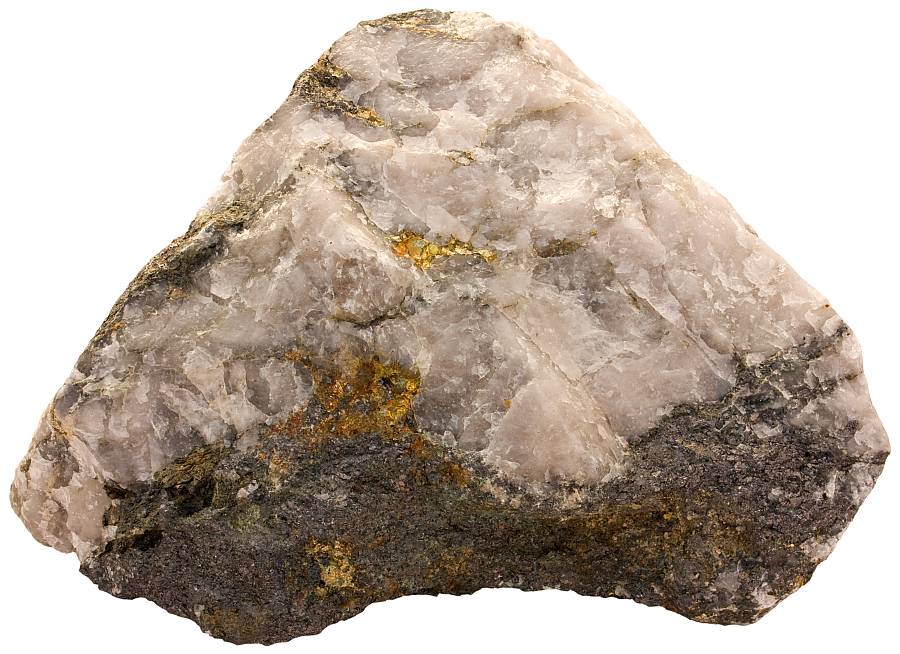
Quartz with ore minerals chalcopyrite, pyrite, pyrrhotite, magnetite. Width of sample 11 cm.
Chalcopyrite may be an important constituent of skarn ores if the magmatic liquids were rich in copper. Skarn is a rock type that forms when hot silicate magmatic liquids are in contact with carbonate rocks (limestone, dolomite, marble). The result is a Ca-bearing silicate minerals, mostly certain amphiboles and pyroxenes but also Ca-garnets, epidote, wollastonite. These rocks are also often rich in ore minerals. The name ‘skarn’ itself is given to these rocks by Scandinavian miners. This is the useless part (gangue) of the ore body which is surrounding the richest mineralized vein. For the geologists and rockhounds, on the other hand, skarns are a rich source of many interesting and uncommon minerals.
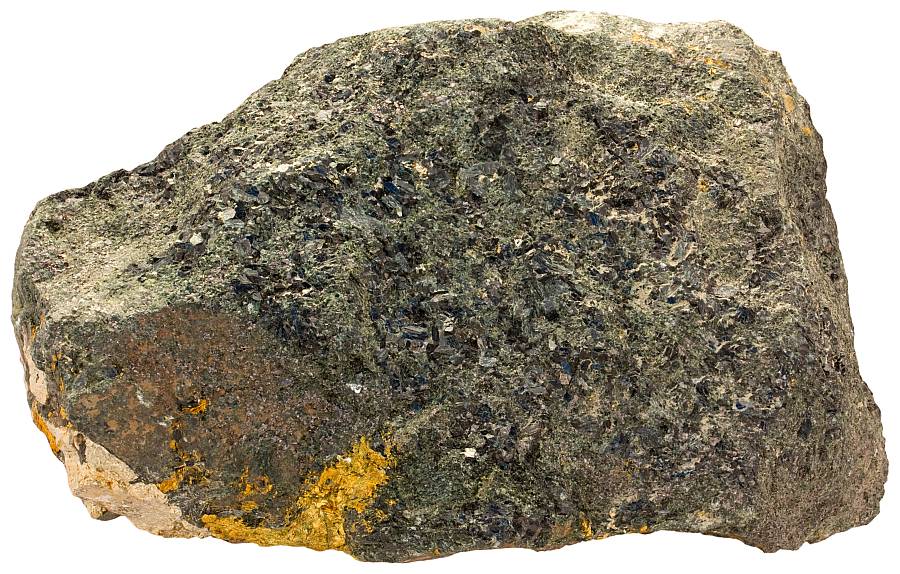
Here is a sample of skarn with ore minerals. Skarn minerals are Ca-rich amphibole actinolite and calcic clinopyroxene. Width of sample 8 cm. Hannukainen, Finland.
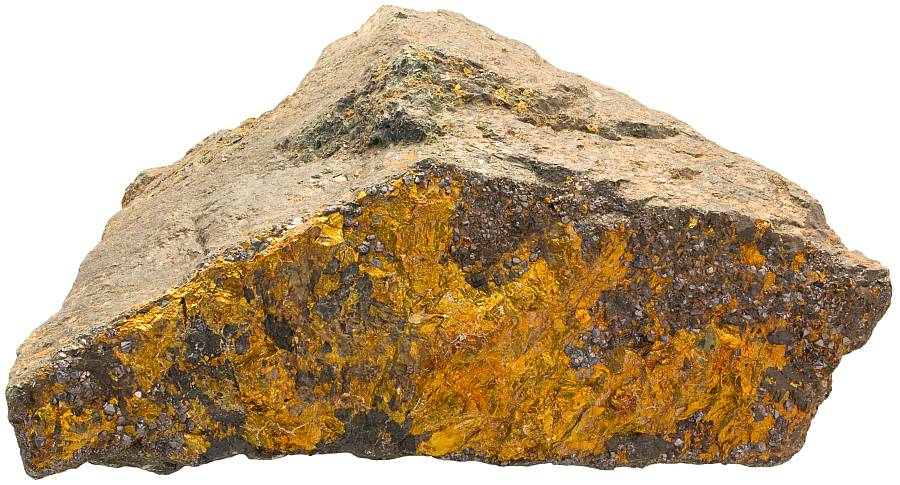
A polymetallic ore sample with chalcopyrite, magnetite and pyrite being the main phases. Width of sample 9 cm. Hannukainen, Finland.
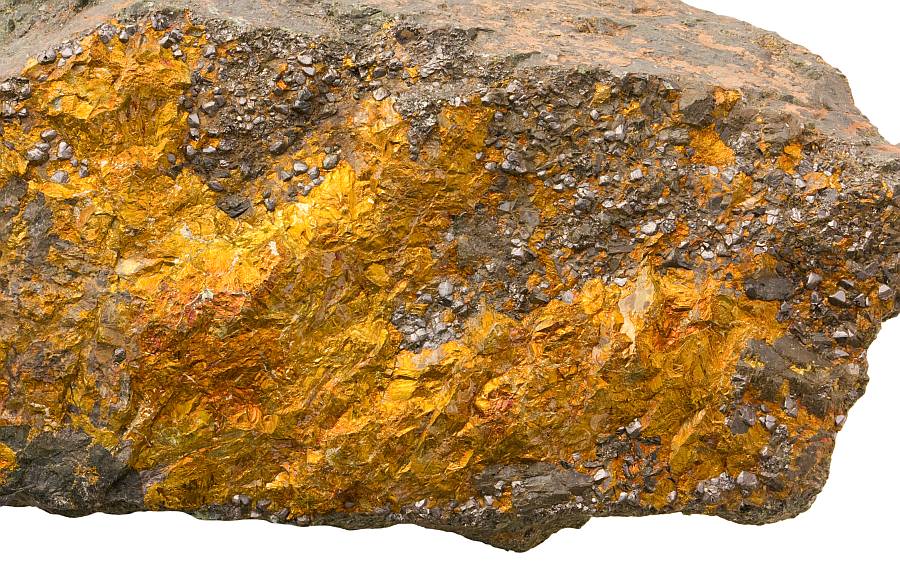
A closer view of the same sample. Gray is magnetite and bright yellow is chalcopyrite.
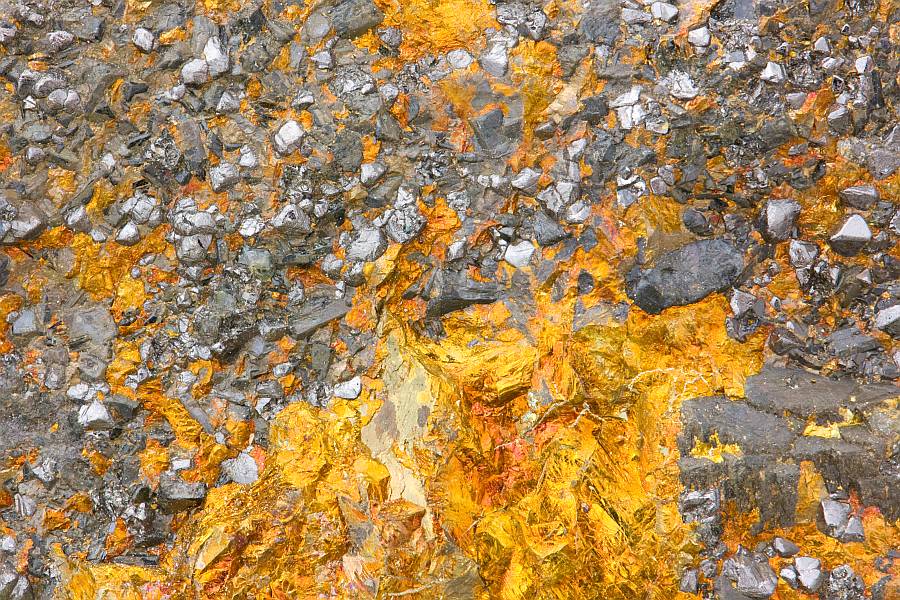
And here is a more closer look which reveals lots of beautiful octahedra of magnetite. Pyrite is paler in the centre partly covered with chalcopyrite. Width of view 30 mm.
Chalcopyrite is a sulfidic mineral and very likely occurs with pyrite which is a well-known nuisance causing an array of environmental problems. These minerals decompose easily and turn groundwater acidic which also helps to leach out other heavy metals from minerals often associated with them.
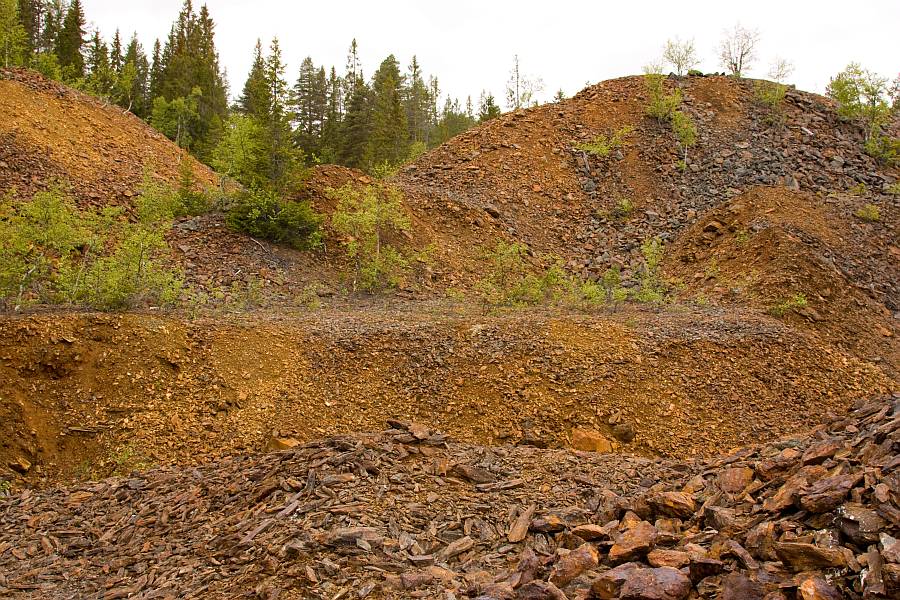
An abandoned copper mine. Even the air has a specific sour smell in these desolate places. The dumps of the Dragset copper-zinc mine, Norway.
Leave a Reply